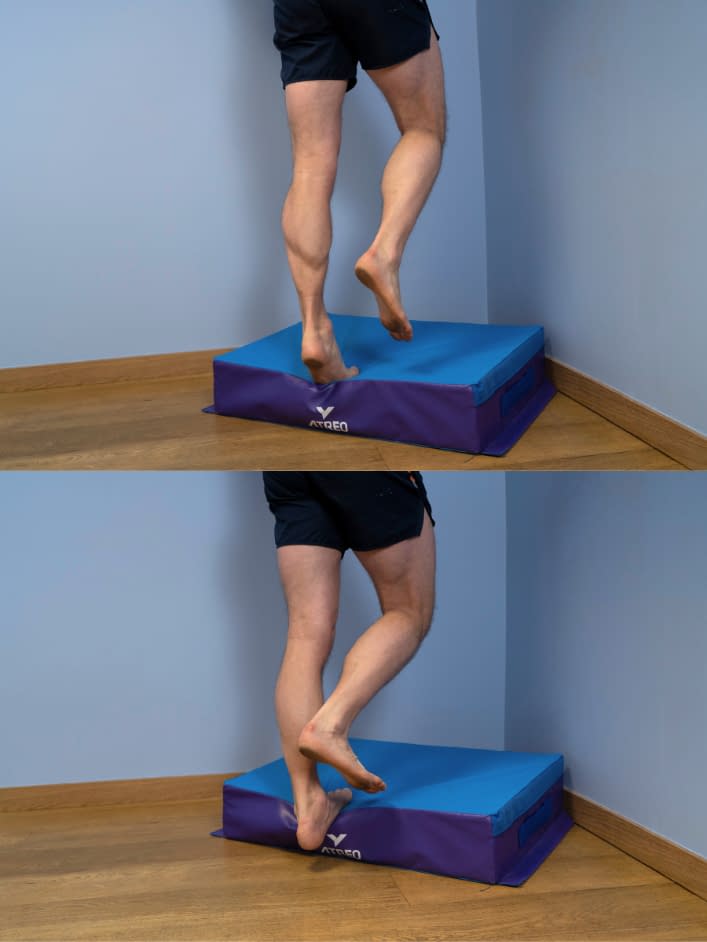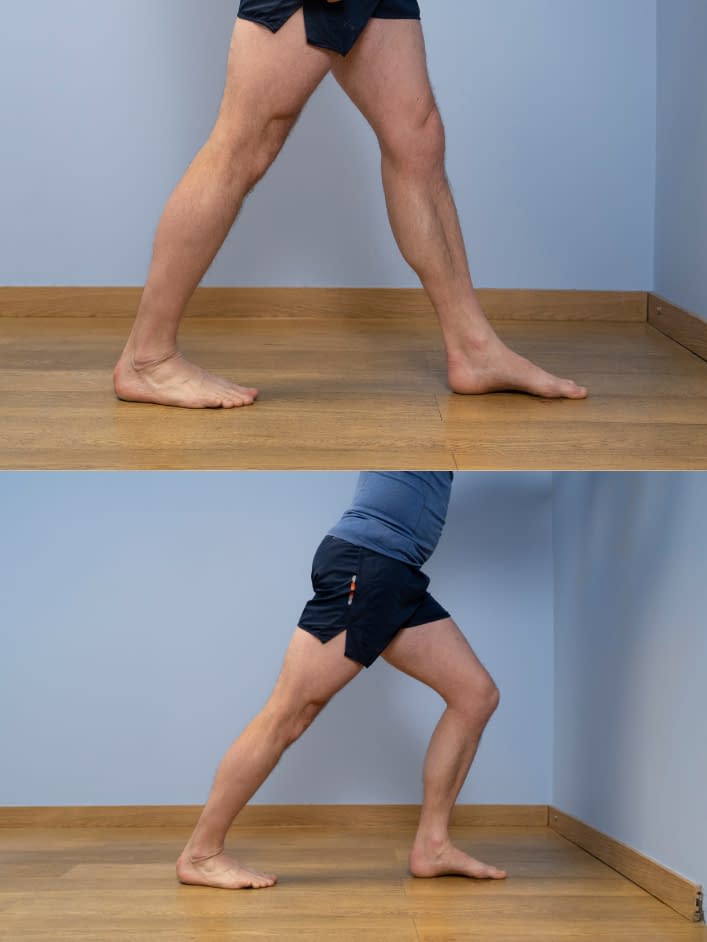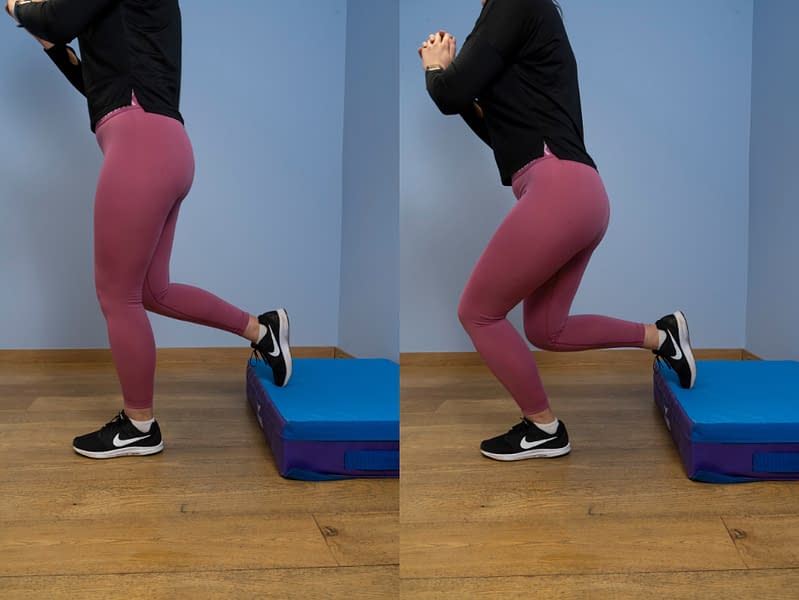Plantar Fasciitis Advanced Exercise Programme
Aim to perform this programme a minimum of once per day unless prescribed otherwise. As with any new exercise, start slowly (repetitions as able) and build up as you are able within the guidelines below.
Pain should not exceed 4/10 whilst completing this exercise programme.
1. Single leg heel raise from step with toes extended
- In socks/bare feet, stand at the bottom of the step facing it and place a rolled-up towel across the step.
- Stand on the step with the affected leg only and have the front half of the foot on the step with the toes on the towel so that they are raised towards the ceiling – the heel should drop down below the step.
- Have a wall/stable object nearby to assist with balance – the non-affected leg should be off the floor throughout.
- Push down through the front of the foot and toes so that your heel rises.
- Lift the heel as high as possible and then with control, slowly lower the heel all the way down over the course of a 5-second count.
2. Upper calf stretch
- In standing arm’s length away from a wall, place your hands on the wall at about shoulder height.
- Then keeping contact with the wall, take a small step backward with the leg that you are going to stretch (if possible, place a towel approximately 2 inches thick under your big toe).
- From this position, lean forward towards the wall keeping the heel of the back foot down and the knee straight.
- Use the front leg to balance.
- You should feel a stretch in the upper part of the calf muscle, just below the knee.
3. Raised split squat
- For this exercise, you will need a secure raised surface behind you such as a small step.
- Stand upright in front of the surface facing away from it.
- Transfer your weight on to the target leg and place the foot of the trailing leg up on the small step.
- Bend the knee and hip of the standing leg so that your hips lower directly downwards to the point where the trailing knee is just off the floor.
- Hold for 3 seconds before squeezing the buttock and thigh muscles to straighten the standing leg – do not forcibly lock out the knee.
We recommend consulting a musculoskeletal physiotherapist to ensure exercises are best suited to your recovery. If you are carrying out an exercise regime without consulting a healthcare professional, you do so at your own risk. If you have any concerns whilst completing these exercises, please contact a healthcare professional.
More Plans
This programme focuses on maintaining range of movement/flexibility within the foot and ankle, appropriate loading of the affected tissue and maintenance of lower limb strength and stability. We suggest you carry this out once a day for approximately 2-6 weeks as pain allows. We can work into pain during these exercises but ideally, this should not exceed any more than 5/10 on your self-perceived pain scale.
- 0
- 1
- 2
- 3
- 4
- 5
- 6
- 7
- 8
- 910
This is the next progression. More focus is given to progressive loading/strengthening of the tissue. As with the early programme some pain is to be expected but ideally, we do not want this to be any more than 4/10 on your self-perceived pain scale.
- 0
- 1
- 2
- 3
- 4
- 5
- 6
- 7
- 8
- 910


